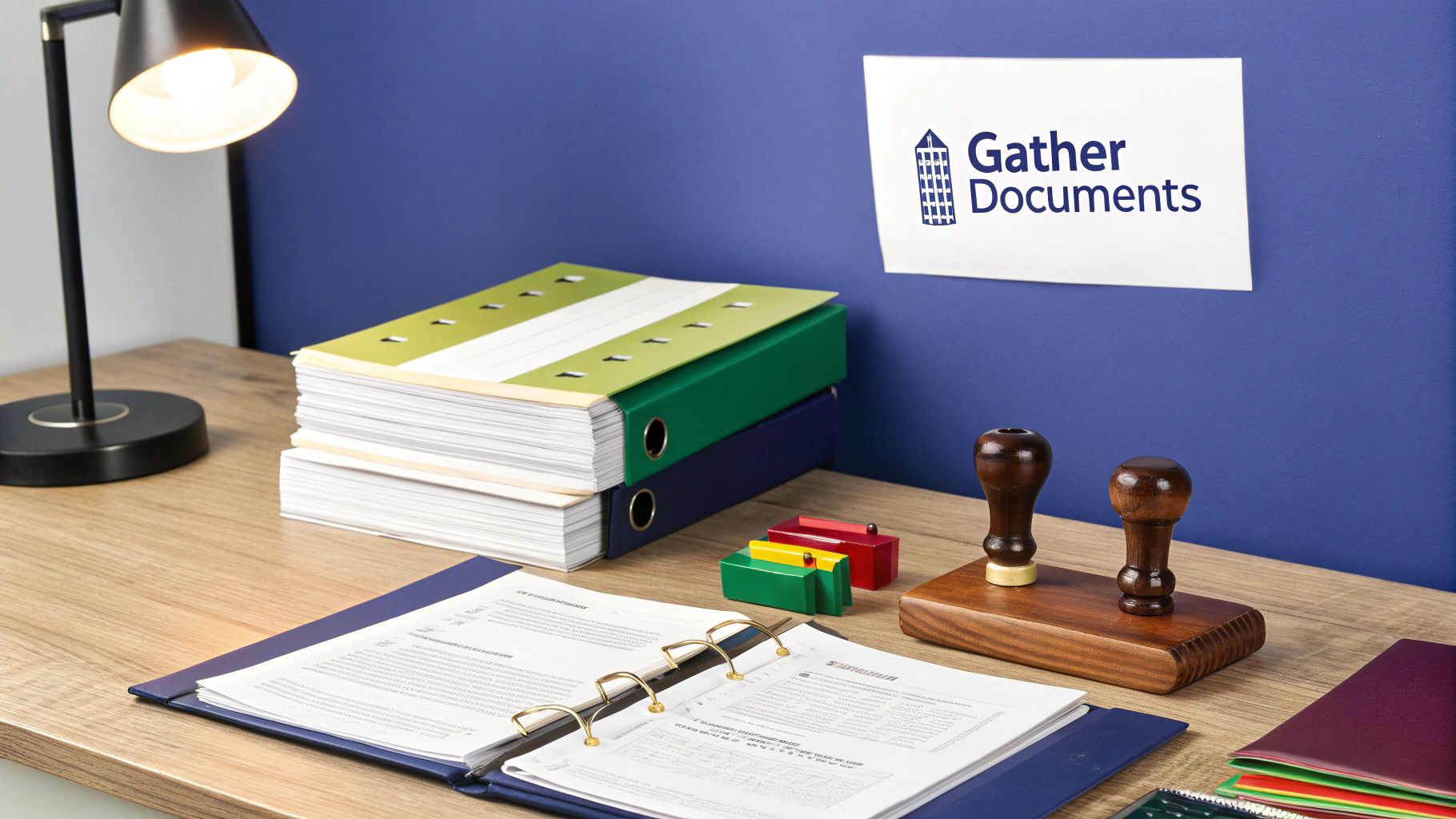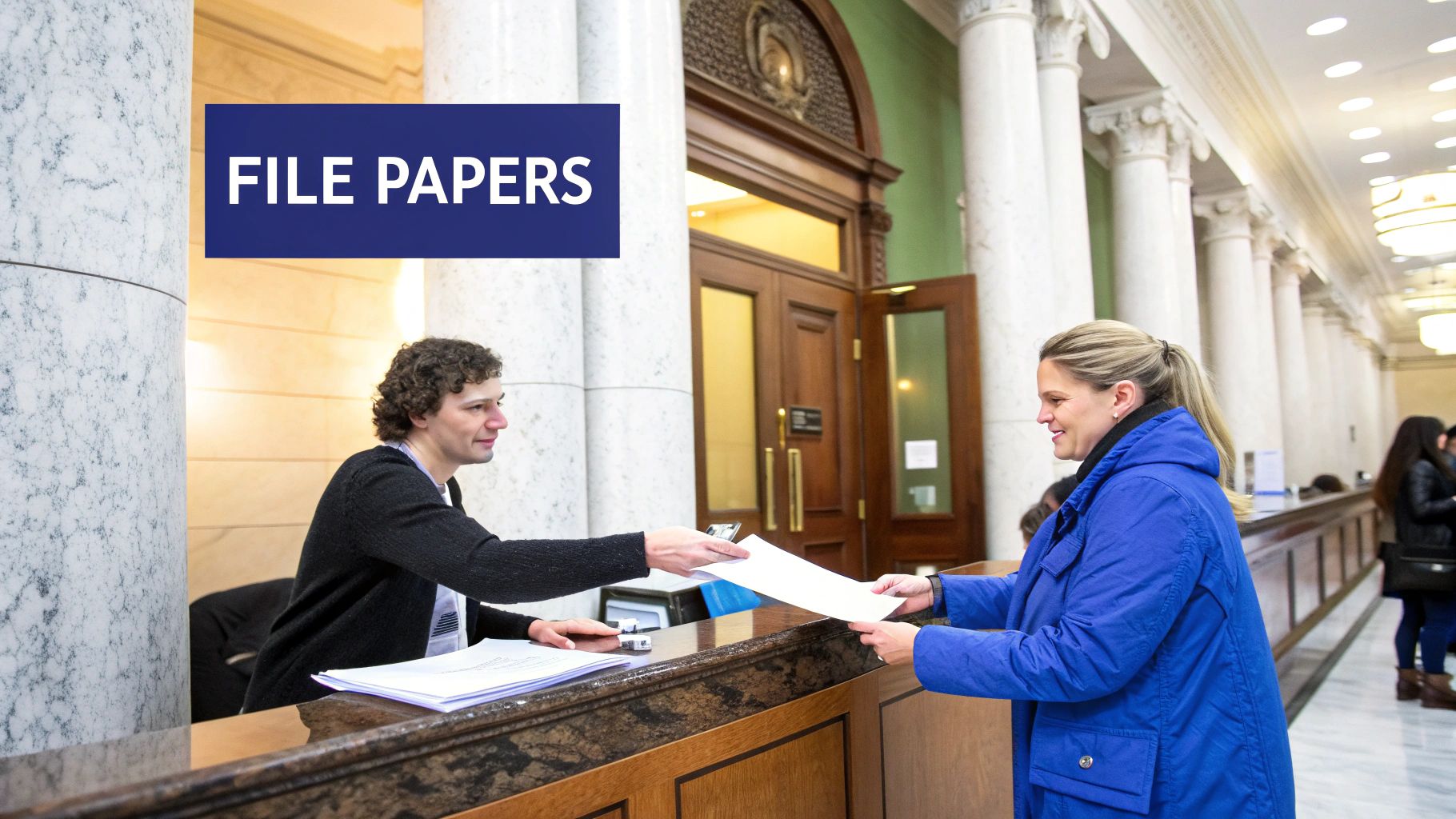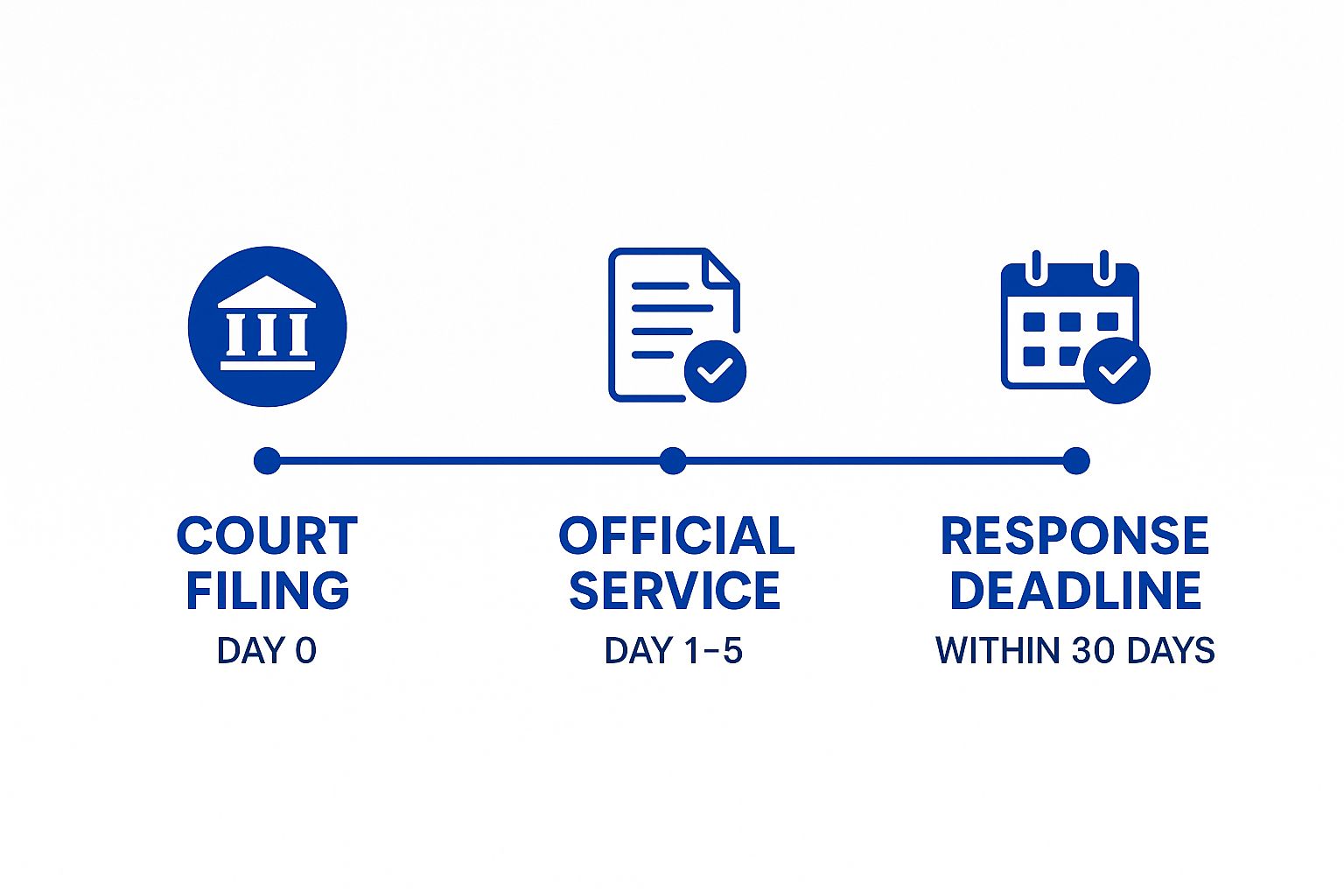Filing Divorce Papers In NY Without A Lawyer
Alright my fans, I am so glad you are here. You have came to the straight up down and all around best family law blog in NY (in my humble opinion of course). My goal is clear, concise, simple and fabulous – for you to leave here with an understand on how to file divorce papers with ease. These papers ideally should be processed with a law firm but you could potentially try to so this without legal representation. But, if you trip, slip or fall in the process- don’t say I did not warn you. Matrimonial breakups may be one of the most disgusting, ugly, grueling, deflating, serotonin killing acts one will ever partake in. That’s right folks, it “aint” pretty to say the least. That’s exactly why we are writing this article so we can give you correct information and spare your valuable time up for you. Filing for divorce in New York can feel overwhelming. It’s a major life change, often filled with emotion and uncertainty. This section aims to clarify the process of filing divorce papers in New York State, offering a better understanding of what to expect. A crucial first step is understanding the difference between a contested and an uncontested divorce.
In an uncontested divorce, both parties agree on all terms, including division of assets, child custody (if applicable), and spousal support. This generally leads to a faster and less expensive process.
On the other hand, a contested divorce means there’s disagreement on one or more issues. This can lead to extended legal proceedings, mediation, and court hearings. The type of divorce you have significantly impacts the complexity of the paperwork and the overall time-frame.
Understanding the Paperwork
Several key documents are required for a divorce in New York State. The Summons with Notice formally begins the divorce proceedings and informs your spouse of the action.
The Verified Complaint outlines the reasons for the divorce and your requests regarding asset division, custody, and support. Various financial disclosure forms detailing assets, liabilities, income, and expenses are also essential for transparency and fair distribution.
New York’s Specific Requirements
New York State has specific requirements for a successful filing. One is the residency requirement, which mandates that at least one spouse has lived in New York for a certain period before filing.
New York also recognizes specific grounds for divorce, meaning you must provide a legally valid reason for seeking the divorce. Understanding these details is crucial for a smooth process. For those seeking legal assistance, chatbots can provide initial guidance and streamline client intake.
Divorce procedures can vary significantly. For example, the divorce rate in Nevada in 2021 was 4.0 per 1,000 people, while Massachusetts had a much lower rate of 1.0 per 1,000 people. This highlights the importance of understanding local laws.
Being prepared and understanding New York’s specific regulations is key to effectively navigating your divorce. Starting the process with clear expectations and an organized approach can reduce stress and contribute to a more efficient resolution.
Essential Documents: What You Need Before You Begin
Preparing for a divorce in New York can feel overwhelming, but gathering your documents in advance can significantly simplify the process. This organized approach can reduce stress and empower your attorney to build a stronger case. This section outlines the essential documents you should gather before filing.
Financial Documentation
Financial transparency is crucial in New York divorce proceedings. Providing a complete picture of your shared financial life is essential. Gathering these documents early can significantly streamline the legal proceedings.
- Bank Statements: Provide 12 months of statements from all checking and savings accounts.
- Tax Returns: Include state and federal tax returns for the past three to five years. These provide a comprehensive overview of your income and tax obligations.
- Retirement Account Statements: Gather statements for 401(k)s, IRAs, pensions, and other retirement accounts.
- Pay Stubs and W-2s: These documents verify your current income and employment status, vital for calculating support payments.
- Mortgage Statements and Property Deeds: If you own property, these documents verify ownership and outstanding mortgage balances.
- Investment Account Statements: Include statements for brokerage accounts, stocks, bonds, and other investments. This information is crucial for ensuring equitable asset distribution.
- Loan and Credit Card Statements: Understanding your debts is just as important as understanding your assets. Provide statements for all loans and credit cards.
- Records of Major Purchases and Sales: Document transactions for significant assets like vehicles or artwork.
Personal Documentation
Beyond financial records, certain personal documents are also necessary. These documents establish the foundation of your case.
- Marriage Certificate: This document officially verifies your marriage.
- Prenuptial or Postnuptial Agreements (If Applicable): These agreements outline pre-existing arrangements for asset division and support in the event of divorce.
- Children’s Birth Certificates (If Applicable): These are essential for determining custody and support arrangements if you have children.
Organizing Your Divorce Paperwork
Managing the volume of paperwork associated with a divorce can feel daunting. However, a systematic approach makes the process more manageable.
- Create a Dedicated File System: Use physical or digital folders to organize each document category.
- Use a Spreadsheet to Track Documents: A spreadsheet can help you list each document, note its location, and explain its relevance to your case. This can be especially helpful when dealing with complex financial situations.
- Maintain a Log of Communications: Keep a record of all interactions with your spouse or their attorney, including emails, letters, and phone calls. This record can help prevent misunderstandings and protect your interests.
Preparing these documents upfront will contribute to a smoother, more efficient divorce process. Remember, specific requirements may vary based on individual circumstances. Consult with an experienced New York divorce attorney for personalized guidance. Understanding the process empowers you to focus on moving forward.
Filing in New York: Your Step-by-Step Blueprint
Navigating a divorce in New York requires understanding the specific legal procedures. This guide provides a clear roadmap for filing divorce papers in New York State. Just as you would meticulously gather documents for a visa application, preparing all necessary paperwork beforehand ensures a smoother divorce process. We’ll clarify the legal terminology and explain each document’s significance.
Starting the Process: Key Documents
Initiating divorce proceedings in New York involves compiling several essential documents. These documents form the basis of your case and communicate your intentions to the court. Understanding their purpose is vital for effective navigation.
- Summons with Notice: This document officially commences the divorce process, notifying your spouse of the filing and providing legal notice. Proper service of the summons, in accordance with New York’s procedural rules, is crucial.
- Verified Complaint: This document outlines the reasons for the divorce, known as the grounds for divorce. It details your requests concerning child custody arrangements, child support, spousal support (alimony), and the division of marital property.
- Additional Forms: Depending on your individual situation, additional forms may be necessary. These might include financial disclosure affidavits, child support worksheets, or other relevant documents. Consulting a New York divorce attorney can help you determine the required paperwork.
Understanding New York’s Residency Requirements
New York mandates specific residency requirements for filing divorce. Either you or your spouse must fulfill one of the following conditions:
- Both parties reside in New York State and were married in New York.
- Both parties reside in New York State and lived in New York as a married couple.
- One party has resided in New York State continuously for one year immediately preceding the filing and meets one of these additional conditions: the marriage occurred in New York State; the parties resided in New York as a married couple; or the grounds for divorce occurred in New York State.
- One party has resided in New York for a continuous period of two years immediately preceding the filing.
Grounds for Divorce in New York
New York recognizes both fault-based and no-fault divorce grounds. Fault-based divorce necessitates proving one spouse’s responsibility for the marriage’s breakdown. This can include grounds such as adultery, cruel and inhuman treatment, or abandonment. No-fault divorce allows divorce without assigning blame, simply requiring a statement that the marriage has irretrievably broken down for at least six months. This no-fault option often simplifies the process.
Filing Your Divorce Papers: Where and How
With your documents prepared, file them with the Supreme Court in the county where you or your spouse resides. Filing can be done in person or, in some counties, electronically. Formal service of the divorce papers on your spouse is the next step. This notifies them of the legal proceedings and the need to respond.
A spouse’s refusal to sign can have significant implications. If a spouse fails to respond within a specified timeframe, a default divorce may be granted, awarding the filing spouse the requests outlined in their complaint. This highlights the importance of proper service and timely responses.
Navigating Complex Situations
For complex cases involving substantial assets, contested custody disputes, or other intricate issues, consulting an experienced New York divorce lawyer is highly recommended. They can provide personalized guidance and ensure the protection of your rights. Legal counsel can help you navigate these complexities and strive for a resolution that meets your needs.
The following table provides a checklist of forms commonly used in New York divorce proceedings. While not exhaustive, it serves as a useful starting point. Consulting with a legal professional will ensure you have all the necessary forms for your specific situation.
New York State Divorce Forms Checklist
| Form Name | Form Number | Required/Optional | Special Circumstances |
|---|---|---|---|
| Summons with Notice | — | Required | — |
| Verified Complaint | — | Required | — |
| Affidavit of Service | — | Required | Proof of service on spouse |
| Statement of Net Worth | — | Usually Required | Details financial information |
| Child Support Worksheet | — | Required if children are involved | Calculates child support obligations |
| Affidavit of Custody and Support | — | Required if custody or support is contested | Outlines custody and support arrangements |
| Notice of Entry | — | Required | Informs parties of court orders |
This checklist offers a quick reference for the forms you may encounter. Remember, an attorney can offer tailored guidance based on your specific circumstances.
Submit Your Papers: Where, When, and How to File Effectively
After carefully preparing your divorce papers in New York, the next critical step is filing them correctly. This involves knowing where to file, understanding the costs, and choosing the right filing method. This section provides a practical guide to submitting your divorce paperwork in New York.
Choosing the Right Courthouse
In New York, you must file your divorce papers with the Supreme Court in the county where either you or your spouse resides. This determines the venue, or the specific court where your case will be heard. Selecting the correct county is crucial for a smooth process.
Filing Fees and Fee Waivers
Filing for divorce in New York requires a filing fee, which may vary slightly by county. If you are experiencing financial hardship, you can apply for a fee waiver. This makes the legal system accessible to those with limited resources by removing the initial financial burden.
Filing Methods: In-Person vs. Electronic
You can typically file your divorce papers either in person or electronically, depending on the county’s procedures. In-person filing involves physically bringing your documents to the courthouse clerk. Electronic filing, when available, offers faster submission and often reduces rejections due to formatting issues. Check with your county’s Supreme Court to confirm whether electronic filing is an option.
After You File: What Happens Next?
After submitting your paperwork, the court clerk assigns a case number and officially files your divorce petition. The next key step is serving your spouse, which means officially notifying them of the lawsuit. Proper legal procedures must be followed for service to be valid. This service initiates the timeframe for your spouse to respond to your petition. It’s interesting to note how external factors can impact personal decisions like divorce. For example, during the COVID-19 pandemic, the U.S. divorce rate decreased to 2.3 per 1,000 people in 2020, a drop of nearly 16%.
Serving Your Spouse: Avoiding Conflict
Serving your spouse doesn’t have to be a confrontational process. While you cannot serve your spouse yourself, a process server, a neutral third party authorized to deliver legal documents, can be used. Anyone over 18 and not involved in the case can also serve the papers. This approach helps maintain respectful distance and minimize potential conflict during a stressful time.
Critical Deadlines: Staying on Track
After being served, your spouse typically has 30 days to respond to your petition. Missing these deadlines can significantly impact your case. If your spouse fails to respond within the required timeframe, you may be able to pursue a default divorce. This means the court might grant your requests without further input from your spouse. Therefore, understanding and meeting all court deadlines is essential. Properly filing your divorce papers sets the foundation for all subsequent legal proceedings. A clear understanding of these procedures helps ensure your divorce proceeds effectively and efficiently under New York law.
The Waiting Game: Managing Response Times and Next Steps
After filing your divorce papers in New York, a waiting period begins. Understanding this phase can lessen anxiety and help you prepare for the next steps. This section explains the response process and the different scenarios you might encounter.
This infographic shows the typical timeframe from the initial filing to the response deadline. After filing with the court, your spouse must be officially served. They then have a limited time, generally 30 days, to respond to the petition.
Understanding Your Spouse’s Response
Once served, your spouse has several options:
- Agreement: Your spouse agrees to the terms outlined in the divorce papers. This signifies an uncontested divorce and speeds up the process. You can then move forward to finalize the divorce fairly quickly.
- Contested Divorce: Your spouse disagrees with some or all of the terms, resulting in a contested divorce. This often requires mediation or court hearings to resolve the disputed issues. A contested divorce typically takes longer and involves more complex legal procedures.
- No Response: If your spouse doesn’t respond within the allotted time, you may be able to obtain a default divorce. This grants the requests outlined in your initial filing. However, it’s important to follow the correct legal procedures to secure a default divorce.
Temporary Orders: Addressing Immediate Concerns
During the waiting period, you might need to address urgent issues such as finances, housing, or childcare. Temporary orders, obtained through the court, provide interim solutions while the divorce is pending.
These orders can establish temporary child support, spousal maintenance, or custody arrangements. They offer stability and address immediate needs during this transition.
Managing Communications and Boundaries
While waiting for a response, maintain clear boundaries and document all communication with your spouse. This documentation is vital if the divorce becomes contested.
It provides a record of agreements, disagreements, and any other important interactions. Organized record-keeping is essential throughout the divorce process, especially in New York.
This waiting period can be emotionally difficult. Remember to prioritize your well-being and seek support from friends, family, or a therapist. This support system can provide stability and guidance as you navigate this process. Understanding the different possible responses and preparing accordingly can significantly reduce uncertainty.
Beyond Filing: Navigating Your Path to Divorce Completion
Filing your divorce papers in New York State is a significant first step. However, it’s only the beginning of the process. What happens after you submit those documents? This section provides a practical overview of the journey to divorce completion, specifically within the New York legal system.
Understanding the Post-Filing Process
After filing and serving the divorce papers, your spouse has a specified timeframe to respond. This response significantly shapes the course of your divorce. An agreement between both parties signifies an uncontested divorce, simplifying the proceedings and generally leading to quicker finalization.
However, disagreement on any of the divorce terms results in a contested divorce, introducing potential complications and delays. Contested divorces often necessitate mediation or even court appearances to resolve disputes. This can add to the overall time involved and increase emotional strain. Understanding these potential pathways prepares you for the various scenarios you might encounter.
Discovery: Unveiling the Facts
In contested divorce cases, the discovery phase is essential. Discovery is the formal legal process of exchanging information between both parties. This involves gathering financial records, responding to interrogatories (written questions under oath), and participating in depositions (oral testimony under oath). Thorough preparation for the discovery process is paramount.
Organized documentation, clear and consistent communication with your attorney, and a composed demeanor during depositions all contribute to a smoother, more efficient discovery phase. This phase is vital for constructing a robust case and ensuring a fair resolution. The information gathered during discovery forms the foundation for the court’s decisions.
Timelines and Challenges in New York
The timeframe for a divorce in New York varies greatly depending on the intricacies of each case. Uncontested divorces can often be finalized within a few months. However, contested divorces, especially those involving complex asset division or child custody disputes, can last a year or more.
Unforeseen challenges frequently arise, demanding flexibility and open communication between parties and their respective legal counsel. Compromise, where appropriate, can significantly expedite the process. National statistics illustrate the prevalence of divorce: first marriages have a 50% chance of ending in divorce, second marriages a 60% chance, and third marriages a 73% chance. These figures highlight the importance of seeking expert legal guidance when navigating a divorce, particularly in New York.
To help you understand the potential timeframes involved, let’s take a look at the following table:
Average Timeline for Divorce Proceedings
Comparison of typical timeframes for different types of divorce cases from filing to finalization
| Type of Divorce | Minimum Time | Average Time | Factors That May Extend Timeline |
|---|---|---|---|
| Uncontested | A few months | 3-6 months | Disagreements arising during the process, complex paperwork |
| Contested | 6+ months | 1+ year | Complex asset division, custody disputes, level of cooperation between parties, court backlog |
As you can see, uncontested divorces proceed much faster due to the agreement between parties. However, even in these cases, unforeseen complications can arise and extend the process. Contested divorces are inherently longer due to the need for court intervention and the resolution of disputes.
Managing Expectations and Moving Forward
Maintaining realistic expectations is crucial throughout the divorce process. Understanding the possibility of delays, the emotional weight of the proceedings, and the importance of clear communication can substantially reduce stress and promote a smoother transition. Staying organized, seeking support from friends and family, or consulting with a therapist are valuable strategies for navigating the inherent emotional difficulties of divorce.
While navigating these complexities, it’s essential to be aware of the different potential outcomes and the various factors that influence them.
When to Call in the Pros: Smart Legal Help That Won’t Break You
Filing divorce papers in New York State can be a difficult process, especially during an emotionally charged time. While some couples manage a DIY divorce, it’s not the best fit for everyone. Knowing when to seek legal help can save you time, money, and stress. This section will help you assess your situation and decide how to proceed.
Assessing Your Need for Legal Guidance
Completing the initial paperwork may seem simple, but several factors can complicate matters. An uncontested divorce, where both parties agree on all terms, often requires less legal representation. However, even in these cases, consulting with an attorney to review your agreement can prevent future problems.
Consider seeking professional guidance if:
- You have significant assets to divide, such as real estate, retirement accounts, or businesses. Proper valuation and division of these assets often requires specific legal and financial knowledge.
- You are involved in a contested divorce with disputes about custody, child support, or spousal maintenance (also known as alimony). These situations often lead to court hearings and require skilled legal representation.
- You suspect your spouse is hiding assets or not fully disclosing financial information. An attorney can help uncover hidden assets and ensure a fair distribution of property.
- You have complex legal issues, such as international custody disputes or unique business valuations. These scenarios demand specific expertise.
Exploring Legal Assistance Options in New York
New York offers several legal assistance options to suit different needs and budgets:
- Full Representation: An attorney handles all aspects of your case. This offers comprehensive support but typically comes with a higher cost.
- Unbundled Legal Services: You hire an attorney for specific tasks, like drafting documents or representing you in court for certain hearings. This helps control costs by choosing only the services you need.
- Legal Coaching: An attorney guides and supports you as you manage the process yourself. This option blends expert advice with greater personal control.
Accessing Affordable Legal Resources
Beyond private attorneys, several resources can offer assistance:
- Legal Aid Organizations: These non-profits offer free or low-cost legal services to those who meet specific income requirements.
- Law School Clinics: Many law schools run clinics where students, supervised by experienced attorneys, provide legal assistance at reduced rates.
- Court-Based Self-Help Centers: These centers offer resources and guidance for navigating the court system without an attorney. They can assist with basic procedures and forms but don’t provide legal advice.
Finding the Right Legal Professional for Your Needs
When choosing an attorney, consider these factors:
- Experience: Look for a lawyer specializing in family law with a strong record in New York divorce cases.
- Communication Style: Ensure the attorney is responsive and communicates clearly.
- Fees: Understand the attorney’s fee structure upfront and ensure it fits your budget.
During consultations, ask potential attorneys these questions:
- What is your experience with cases like mine?
- How do you communicate with clients during the divorce process?
- What is your estimated cost for my case, and what does that include?
Making informed decisions about legal representation is crucial in navigating the divorce process. DIY divorce can work in some cases, but seeking professional help when necessary protects your rights and helps ensure a smoother, more equitable result.
Ready to discuss your specific situation with an experienced New York divorce attorney? Contact Aronov Law NY for a free consultation today. We can provide the guidance and support you need.


Free Legal Consultation
98-14 Queens Blvd




